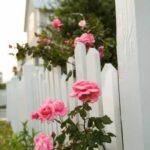Have you ever dreamed of creating a royal garden in your own backyard? The allure of well-designed royal gardens has captivated people for centuries, with their meticulously planned layouts and breathtaking beauty. In this blog post, we will delve into the world of royal garden layout designs and blueprints. We will explore the historical inspiration behind these gardens, the essential elements that make them unique, and provide tips for incorporating these design principles into your own outdoor space.
Throughout history, royal gardens have served as symbols of wealth, power, and prestige. From the opulent gardens of Versailles to the serene retreats of Japanese emperors, these spaces have been carefully crafted to reflect the grandeur and taste of their owners. Our exploration will include a look at how these historical designs can be adapted for modern gardens, allowing you to bring a touch of regal elegance to your own backyard.
We will also provide detailed breakdowns of the essential elements that define a royal garden layout, including various types of plants typically found in these spaces and how to incorporate them into smaller or more modern settings. Additionally, we will discuss the importance of proper planning and layout through sample blueprint designs, as well as tips for selecting and maintaining the right plants for your royal garden.
Whether you have a sprawling estate or a small urban oasis, this blog post is sure to inspire you to create your very own slice of royal paradise.
Historical Inspiration
Historical royal gardens have long been a source of inspiration for garden enthusiasts around the world. They showcase unique layouts and designs that reflect the opulence and grandeur of the time. From the intricately designed gardens of Versailles to the serene beauty of Japanese imperial gardens, these historical examples offer valuable insights into creating a well-designed royal garden layout for modern spaces.
When exploring historical royal gardens, it’s important to take note of their unique layouts and features. These could include symmetrical designs, manicured lawns, perfectly pruned trees, and carefully placed water features. By studying these elements, we can adapt and incorporate them into our own garden designs, regardless of size or space limitations.
To bring historical inspiration into your modern garden layout, consider incorporating some key elements such as:
- Symmetry: Creating balanced and symmetrical designs within your garden space
- Water features: Adding fountains or ponds to create a serene atmosphere
- Grand pathways: Utilizing wide walkways or paths lined with lush greenery
- Ornate structures: Incorporating arches, pergolas, or gazebos for added elegance
By taking cues from historical royal gardens, you can infuse your outdoor space with a sense of timeless beauty and sophistication that will elevate the overall aesthetic appeal of your garden. Whether you have a small backyard or a larger estate, there are various ways to adapt these historical inspirations to suit your individual preferences and space requirements.
Elements of a Royal Garden
The layout and design of a royal garden are what set it apart from other types of gardens. Each element plays a crucial role in creating the majestic and enchanting atmosphere that is characteristic of these gardens. In this section, we will delve into the essential elements that make up a royal garden layout and discuss how you can adapt these elements to suit your own space.
Formal Layout
One of the defining features of a royal garden is its formal layout. Symmetry, balance, and geometric shapes are often used to create an organized and visually appealing design. Straight paths, perfectly manicured hedges, and carefully placed flower beds all contribute to the formal structure of the garden. Even in smaller or more modern spaces, you can incorporate this element by using boxwood hedges, linear pathways, and structured plantings to emulate the look and feel of a royal garden.
Statues and Ornaments
Another key element in royal gardens is the use of statues, fountains, and ornamental structures to add grandeur and charm to the space. These decorative features serve as focal points within the garden and contribute to its overall sense of luxury. While large-scale statues may not be practical for every garden, you can still achieve a similar effect by incorporating smaller sculptures or ornamental pieces that reflect your personal style.
Traditional Plantings
Royal gardens are known for their abundance of lush greenery, vibrant flowers, and meticulously manicured lawns. Traditional plantings such as roses, hydrangeas, topiaries, and ornamental trees are commonly found in these gardens. When planning your own royal garden layout, consider incorporating these classic plant varieties to capture the timeless beauty that defines a royal garden while also ensuring they are suitable for your climate and growing conditions.
By understanding and implementing these key elements into your own garden design, you can create a space that exudes elegance and sophistication reminiscent of historical royal gardens. Whether you have a sprawling estate or a compact urban backyard, incorporating these elements will help you achieve a truly regal atmosphere in your outdoor oasis.
Choosing the Right Plants
When it comes to creating a royal garden layout, the choice of plants plays a crucial role in achieving the desired aesthetic and atmosphere. Historically, royal gardens often featured an abundance of lush greenery, vibrant flowers, and aromatic herbs. These plants not only added to the visual beauty of the garden but also served practical purposes such as providing ingredients for medicinal remedies and culinary delights.
Types of Plants
Incorporating plants that were traditionally found in royal gardens is key to creating an authentic and majestic atmosphere. Consider including classic blooms such as roses, peonies, and hydrangeas for a touch of elegance. Additionally, fragrant herbs like lavender, rosemary, and thyme can add a delightful sensory experience to your garden. Trees such as topiary boxwoods or sculpted hedges can also contribute to the formal and structured look often associated with royal gardens.
Selecting and Maintaining Plants
When choosing plants for your own royal garden layout, it’s essential to consider factors such as climate, soil conditions, and maintenance requirements. Opt for varieties that thrive in your specific region and are well-suited to the amount of sunlight available in your garden space. Additionally, regular pruning, watering, and fertilization are necessary for ensuring the health and longevity of your chosen plants.
Adapting Royal Garden Plants
For those with smaller or more modern garden spaces, it may be necessary to adapt the types of plants typically found in royal gardens. Consider utilizing container gardening or vertical growing techniques to maximize limited space while still incorporating traditional royal garden flora. By carefully selecting and arranging your plants, you can create a captivating display that evokes the grandeur of historical royal gardens within a more contemporary setting.
Blueprint Designs
When it comes to creating a royal garden, proper planning and layout are crucial for achieving the desired grandeur and elegance. Whether you have a large estate or a smaller urban space, having a detailed blueprint design can help you visualize and execute your royal garden layout effectively. Here are some essential elements to consider when creating your own blueprint design:
- Consider the overall layout of the garden, including pathways, seating areas, and focal points such as fountains or statues.
- Take into account the natural topography of the land, such as any slopes or existing features that can be incorporated into the design.
- Ensure that there is a balanced composition of different elements, including plants, water features, and architectural structures.
Creating a detailed blueprint design for your royal garden will not only help you visualize the end result but also serve as a guide for implementation. By considering the layout and placement of various elements beforehand, you can ensure that your garden design is cohesive and well-executed.
Additionally, utilizing professional landscaping software or seeking assistance from an experienced landscape designer can provide valuable insights and expertise in creating an accurate blueprint design for your royal garden. Remember that careful planning is the key to achieving a stunning and well-designed royal garden that will stand the test of time.
Adding Water Features
When it comes to designing a royal garden layout, one of the key elements that can elevate the space to a truly regal level is the inclusion of water features. In historical royal gardens, fountains, ponds, and waterfalls were often used to create a sense of tranquility and grandeur.
These features not only added visual interest to the landscape but also provided a soothing ambiance for those strolling through the gardens. In modern garden design, homeowners can take inspiration from these historical elements and incorporate water features into their own outdoor spaces, regardless of size.
For those looking to add a touch of luxury to their garden, incorporating water features is a fantastic way to achieve this. Fountains can serve as stunning focal points, providing both aesthetic appeal and the calming sound of trickling water.
Ponds or small waterfalls can add an additional layer of interest and create a sense of movement within the garden. Even in smaller or more contemporary spaces, homeowners can explore options such as wall-mounted fountains or decorative containers with recirculating pumps to bring the beauty of running water into their gardens.
In addition to aesthetics, adding water features also presents opportunities for creating habitats for wildlife and introducing unique plant species that thrive in or near water. Ultimately, incorporating these elements into your garden design can help create a tranquil retreat right in your own backyard.
Garden Structures and Pathways
The use of garden structures and pathways has been a defining feature of royal garden layouts throughout history. From grand arches to intricate pergolas, these elements play a crucial role in shaping the overall aesthetic and functionality of a garden. In this section, we will delve into the significance of these structures in historical royal gardens, as well as provide insights on how to incorporate them into your own garden design.
Royal gardens have long been adorned with elaborate arches, pergolas, and pathways that not only serve as visually striking features but also contribute to the overall organization and flow of the space. Arches were often used to create grand entrances or focal points within the garden, while pergolas provided shaded walkways for strolling or taking in the scenery. Additionally, carefully planned pathways helped guide visitors through various areas of the garden, showcasing its beauty from different vantage points.
For those looking to incorporate these elements into their own garden design, it’s important to consider the scale and proportion of the space. While larger properties may accommodate grand arches and expansive pergolas, smaller gardens can still benefit from scaled-down versions of these structures. By strategically placing arches or creating smaller covered walkways with trellises, homeowners can evoke a sense of elegance and charm within their own outdoor spaces.
Furthermore, pathways can be designed to meander through different plantings or lead to specific focal points such as a fountain or seating area. Whether using traditional materials like stone or brick for a formal look, or opting for a more natural feel with gravel or wood chips, the placement and material choice for pathways can greatly impact the overall ambiance of the garden.
Ultimately, incorporating garden structures and pathways not only adds visual interest but also enhances the functionality and enjoyment of one’s outdoor retreat.
Color Schemes and Decor
When creating a royal garden, one of the most important considerations is the color scheme and decor. Historically, royal gardens have been known for their vibrant and carefully curated color palettes, as well as ornate decorative elements that add to the overall grandeur of the space. Whether you are working with a large estate or a smaller backyard, there are several key principles to keep in mind when selecting colors and decor for your royal garden.
One way to incorporate a regal color scheme into your garden is by using a combination of rich, jewel-toned hues such as deep purples, blues, and reds. These colors can be found in flowers like roses, irises, and dahlias, which were commonly featured in historical royal gardens. Additionally, consider incorporating gold or bronze accents through planters, sculptures, or architectural features to add a luxurious touch to the design.
In terms of decor, elaborate statuary and intricate topiary can be used to create focal points within the garden. For a more modern take on royal garden decor, consider incorporating elegant outdoor furniture in metal or stone materials that complement the overall aesthetic of the space.
It’s important to strike a balance between opulence and elegance when choosing decor for your royal garden. Too much ornamentation can appear cluttered, while too little may not convey the grandeur associated with traditional royal gardens.
Overall, creating a cohesive color scheme and carefully selecting decor will elevate your royal garden to reflect the sophistication and beauty historically associated with these grand outdoor spaces.
| Element | Description |
|---|---|
| Color Scheme | Rich jewel-toned hues such as deep purples, blues, and reds |
| Decor | Elaborate statuary, intricate topiary, elegant outdoor furniture |
Maintaining a Royal Garden
Once you have designed and implemented your royal garden layout, it is essential to establish a maintenance routine to preserve its beauty over time. Regular upkeep is crucial in ensuring that the plants remain healthy, the structures are well-maintained, and the overall aesthetics of the garden are preserved.
One important aspect of maintaining a royal garden is proper pruning and trimming of plants. This not only helps to control the size and shape of the plants but also promotes healthy growth and flowering. Additionally, regular watering, fertilizing, and pest control are necessary tasks to keep the garden thriving. It is also important to regularly inspect for any signs of disease or damage in order to address them promptly.
In addition to plant care, the overall cleanliness and tidiness of the garden should be maintained. This includes removing fallen leaves, weeding flower beds, and keeping pathways clear. Depending on your garden’s scale and complexity, hiring a professional gardener or landscaping service may be beneficial in ensuring that all maintenance tasks are carried out effectively.
| Aspect of Maintenance | Maintenance Tasks |
|---|---|
| Plant Care | Pruning, watering, fertilizing |
| Garden Cleanliness | Weeding, clearing pathways |
Conclusion
In conclusion, designing a royal garden layout involves careful consideration of historical inspiration, essential elements, plant selection, blueprints, water features, structures and pathways, color schemes, and ongoing maintenance. By exploring the unique layouts of historical royal gardens and adapting them for modern spaces, individuals can create their own majestic outdoor oasis.
The incorporation of elements such as fountains, ponds, arches, and pergolas can add to the grandeur of a royal garden design, while careful plant selection and maintenance are essential for preserving its beauty over time.
As readers consider embarking on their own royal garden design journey, it is important to remember that proper planning and layout are crucial for success. Whether working with a larger estate or a smaller urban space, thoughtful consideration of each element will contribute to the overall aesthetic appeal and functionality of the garden. Additionally, individuals should not be afraid to get creative with color schemes and décor in order to achieve a cohesive and visually stunning outdoor space.
Ultimately, by taking inspiration from historical royal gardens and incorporating key elements into their own designs, individuals can create a truly magnificent outdoor haven. As they start planning their royal garden layout designs and blueprints, they will undoubtedly embark on a fulfilling journey that will bring joy and beauty to their homes for years to come.
Frequently Asked Questions
How Do I Plan My Garden Layout?
Planning a garden layout involves several key steps. First, consider the size and shape of your outdoor space, as well as any existing features such as trees or structures. Next, think about the functions you want your garden to serve, whether it’s for entertaining, growing vegetables, or simply providing a beautiful backdrop to your home.
Then, sketch out a rough design on paper, keeping in mind factors like sunlight exposure and water access. Finally, think about how to incorporate elements like paths, seating areas, and plant beds to create an aesthetically pleasing and functional layout.
How Do You Draw a Garden Plan?
Drawing a garden plan begins with measuring the dimensions of your outdoor space and then transferring those measurements to graph paper. Use a scale that makes sense for your space – for example, one square on the graph paper could represent one foot in your actual garden.
Next, start adding in existing features such as trees or structures before drawing in new elements like pathways, flower beds, or vegetable patches. Don’t forget to consider factors like sun exposure and water access when placing plants in your plan.
What Is the Ratio for Garden Design?
The ratio for garden design often depends on the overall look you’re trying to achieve. A common recommendation is to use a 1:1 ratio between paved or open areas and planted areas – essentially balancing hardscaping with greenery for an aesthetically pleasing result. However, this ratio can be adjusted based on personal preference and specific garden goals.
For example, if you prioritize having more open space for gatherings or play areas, you might opt for a larger paved area compared to planted beds. Ultimately, the ratio should support the overall functionality and beauty of your garden design.

Welcome to my gardening blog! I am passionate about plants and enjoy sharing my knowledge and experiences with others. In this blog, I will write about everything related to gardening, from tips on how to get started to updates on my own garden projects.





